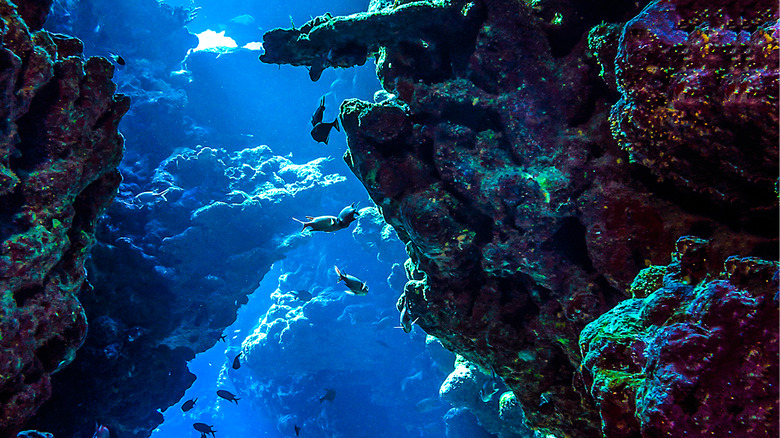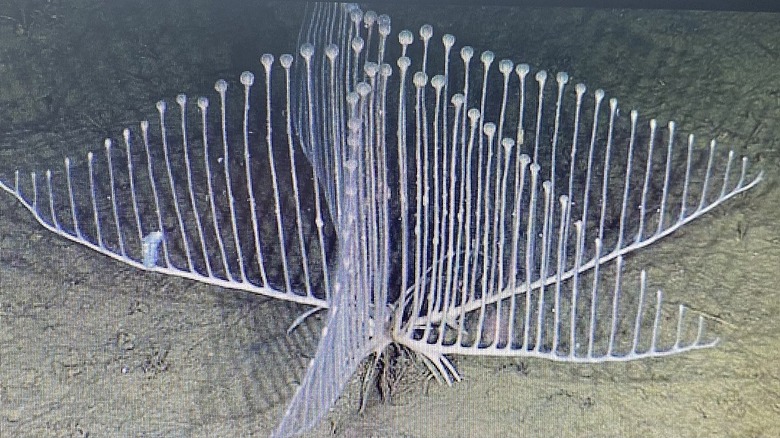The Carnivorous Harp Sponge Is Just As Fascinating As It Sounds
Cartoons have long depicted musicals under the sea. These aquatic jam sessions seem to belong only in fairy tales and fiction. However, in 2000 scientists discovered a new maritime animal hanging out about 10,000 feet beneath the surface. This striking creature, scientifically referred to as Chondrocladia lyra bares an uncanny resemblance to a popular musical instrument — the harp (via Monterey Bay Aquarium Research Institute).
But hold on — you might not want to strike up a dance ensemble with this critter any time soon. As its informal nickname — carnivorous harp sea sponge — suggests, this maritime marvel can and will eat you (if you are a very small crustacean). The horizontal branches protruding upward like strings on a harp are used to ensnare its prey. Once caught up in the elaborate myriad of "musical chords" the victim of this strange-looking sea creature is pierced and thrust into its thin membrane by force before eventually being digested.
The harp sponge is one of several carnivorous sea sponges
A carnivorous sea sponge disguised as a musical instrument lurking on the ocean floor undoubtedly sounds like a myth or legend. Two decades ago, scientists believed it was. They were assured that all sea sponges were filter feeders. However, the Australian Geographic now reports that approximately 197 carnivorous sponge species have since been uncovered and identified, although the harp sponge is certainly one of the most peculiar looking.
The carnivorous harp sponge can possess up to six sets of horizontal branches in total. Not only do these chord-like structures capture prey, but they also contain all of the necessary elements for reproduction. In order to reproduce, the sponge releases packets of sperm into the ocean currents to neighboring sponges who fertilize it. All of them are planted firmly to the ocean floor, unable to move. You can recognize a pregnant carnivorous sea sponge by the bulging bulbs at the tips of its branches (via Monterey Bay Aquarium Research Institute). While these sea babies make look like a stationary choir, they are not to be played with.

